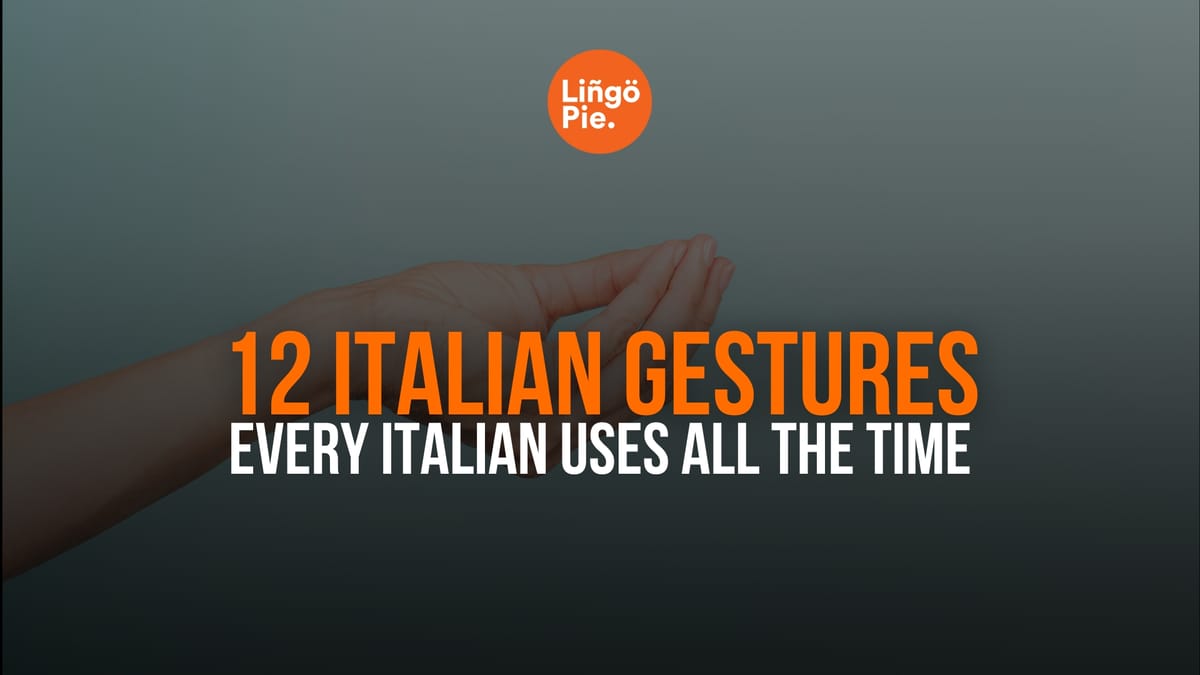What’s the best way to learn Dutch on your own? Well, that depends on how you learn best—but don’t worry, we’ve got you covered. Whether you’re prepping for a move to the Netherlands, want to connect more deeply with Dutch friends, or just love a good language challenge, there is a way that fits your schedule, style, and starting point.
But before anything else, let us be clear on one thing: Dutch can be a bit tricky. Those long words, throat-clearing G’s, and all the little grammar quirks might feel like a lot at first. But with the right tools (and a bit of consistency), you’ll be ordering bitterballen in Dutch and joking with locals faster than you think. This guide breaks down the best way to learn Dutch, especially if you’re going solo.
- 4 Best Dutch Web Series For Language Learners
- How To Say I Love You In Dutch: 10+ Ways To Express Love
- 18 Surprising Dutch Slang Words And Phrases

Understanding the Dutch Language Basics
Before jumping into how to learn Dutch, it helps to know what you’re learning. Dutch is a Germanic language—like English and German—which means if you speak English, you already have a small head start. But it also comes with its own quirks.
Sentence structure is familiar... until it’s not
Dutch sentences often follow the same Subject-Verb-Object order as English:
- Ik leer Nederlands. → I’m learning Dutch.
But here’s the catch: once you add things like time, place, or helper verbs, the word order can change—sometimes sending the verb to the end of the sentence.
- Morgen ga ik naar de winkel. → Tomorrow I go to the store.
- Ik wil Nederlands leren. → I want to learn Dutch.
This sounds wild at first, but you’ll get used to it with enough input.
Dutch has two types of “the”
English uses “the.” That’s it. Dutch uses de and het. You’ll need to memorize which nouns go with which one—there’s no perfect rule. It’s annoying at first, but your brain will start to pick up on patterns the more you read and listen.
Pronunciation might surprise you
Dutch pronunciation isn’t just about how things look. The letter “G” often sounds like you’re clearing your throat (really). Vowels can shift depending on context. The best way to master this is not by reading—it’s by listening a lot and mimicking what you hear.
You’ll meet compound words and false friends
Dutch loves compound words. You’ll see monster-length terms like:
- verzekeringsmaatschappijmedewerker (insurance company employee)
And you’ll run into “false friends”—words that look like English but mean something different. Like:
- Slim in Dutch = smart, not thin
- Raar = weird, not rare

The Best Way To Learn Dutch
Step 1: Start with the Basics
When you're learning Dutch from scratch, it’s tempting to jump into random apps or YouTube videos. But to actually build a strong foundation, you want to start simple and stay consistent.
Get familiar with basic Dutch pronunciation
Start by learning how Dutch sounds. Don’t worry about spelling or grammar just yet—focus on recognizing and repeating sounds. The Dutch “G” is famously rough (kind of like you’re gargling), and vowel combos like ui, oe, and ij don’t sound how they look.
Learn the most useful words first
Skip the random vocabulary. You’ll make faster progress by learning the most common verbs, nouns, and everyday phrases first—especially things you’ll say all the time like:
- Hallo, hoe gaat het? (Hi, how are you?)
- Ik spreek een beetje Nederlands. (I speak a little Dutch.)
- Waar is het toilet? (Where is the bathroom?)
Understand basic sentence patterns
Once you’ve got a few words down, learn how Dutch sentences are usually built:
- Statements: Ik ben moe. (I’m tired.)
- Questions: Ben jij moe? (Are you tired?)
- Negation: Ik ben niet moe. (I’m not tired.)
You don’t need to master grammar yet—but knowing where verbs and objects usually go will make everything easier when you start listening or reading.

Step 2: Pick a Daily Routine You’ll Stick To
Learning Dutch isn’t about grinding for three hours once a week—it’s about showing up every day, even for 10 minutes. Your brain remembers more when you study a little bit, often. The best routine is the one you’ll actually follow.
If mornings are your quiet time, do a quick vocab session over coffee. If evenings are better, wind down with a short podcast or video.
Start with 1–2 core activities
Instead of doing everything, just pick one or two things to do every day. Here are a few beginner-friendly combos that work:
- 5 minutes of flashcards + 1 short Dutch video on Lingopie
- Listening to a Dutch podcast on your commute + writing one sentence in Dutch
- 10-minute Lingopie session + reading a children’s book or comic
Lingopie makes this super easy with native Dutch shows and dual subtitles. You can click on any word in the subtitles to see the translation and save it as a flashcard—great for picking up real, conversational Dutch without digging through a textbook.
Set a timer, not a finish line
Don’t wait to “feel ready.” Set a timer—say, 15 minutes—and focus just on that time. It’s less pressure, and you’re more likely to follow through.
Track your streak (but don’t stress it)
A calendar with little checkmarks, a streak on Duolingo, or a note in your planner—whatever works. Seeing your progress helps build momentum.
If you miss a day, no big deal. Just don’t miss two in a row.

Step 3: Use Dutch Every Day (Even a Little)
You don’t have to understand everything to start learning. Just listening to Dutch—even passively—helps your brain get used to the rhythm, sounds, and structure of the language.
The key is exposure. That could mean:
- Watching a Dutch show with subtitles
- Playing Dutch music in the background
- Listening to a beginner-friendly podcast while walking
Lingopie is great here. Since it’s real TV and movies in Dutch, you’re learning the kind of phrases people actually use—not weird textbook dialogues. Plus, you can turn on dual subtitles and click words to instantly learn them.
Repeat what you hear out loud
This might feel silly, but it works. Pick one sentence from a show, pause it, and say it out loud. Try to copy the pronunciation and rhythm.
This helps bridge the gap between passive listening and actual speaking—without needing a conversation partner right away.
Write or speak a little each day
Even if it’s just one sentence, try to produce something in Dutch daily:
- Say what you’re doing: Ik maak koffie (I’m making coffee)
- Leave a note to yourself in Dutch
- Message a Dutch-speaking friend (or post in a Dutch Discord server)
The goal isn’t to be perfect—it’s to build the habit of using the language, little by little.

Step 4: Build Listening and Speaking Skills
Even if you don’t understand much at first, start listening to real Dutch from the beginning. Why? Because your brain needs time to adjust to how Dutch sounds in real life—not just in slow, robotic recordings.
With Lingopie, you’re getting real Dutch audio from shows made for Dutch speakers. Use the dual subtitles to follow along, and replay short scenes until you start picking up the flow.
Pro tip: Try “shadowing.” Play a short sentence, pause, and repeat it exactly how you hear it. Do it until your version sounds close to the original.
Practice speaking before you feel ready
Most learners wait too long to start speaking. Don’t be one of them. You don’t need perfect grammar to say things like:
- Ik wil koffie. (I want coffee.)
- Ik begrijp het niet. (I don’t understand.)
- Dat is leuk! (That’s fun!)
Say simple things out loud during your day—even if you're talking to your cat. The goal is to get used to forming Dutch sentences with your own mouth, not just recognizing them on a screen.
Record yourself (and listen back)
This one’s a game-changer. Record yourself saying a few Dutch sentences, then play it back and compare it to how a native speaker would say it. It’s awkward at first, but you’ll spot pronunciation patterns quickly.
Step 5: Use the Right Tools (That Actually Help You Speak)
The internet is full of language tools, but not all of them teach you how people actually talk. If you're serious about learning Dutch on your own, use something built around real-life, native content.
That’s where Lingopie comes in.
With Lingopie, you’re not memorizing stiff textbook phrases—you’re learning from real Dutch shows, movies, and documentaries. Every line of dialogue is subtitled in Dutch and your native language. Just click on a word to see the meaning, hear the pronunciation, and save it as a flashcard.
You’re not just watching passively—you’re turning entertainment into a full-on study session.
Make flashcards without lifting a finger
Lingopie has built-in flashcards that let you save new words as you watch. No extra app. No switching tabs. No copying and pasting vocab lists. Just watch, click, and review.
It’s a smoother way to build vocabulary because you’re learning words in context—in real conversations, with real accents, and real reactions.
Focus on input you enjoy
You’re way more likely to stick with Dutch if you’re learning from something that actually holds your attention. Whether you’re into crime dramas, feel-good series, or quirky comedy—Lingopie has Dutch content to match your vibe.
The more you enjoy what you're watching, the more you’ll come back—and the faster you'll improve.
Step 6: Track Your Progress Without Burning Out
You don’t need to aim for fluency in six months. Start with something you can actually reach—like understanding one episode of a Dutch show without subtitles or having a short chat with a native speaker.
Lingopie makes this easy to track. Since you’re watching native content, you’ll naturally notice progress:
- You start recognizing repeated phrases
- You stop needing to pause every sentence
- You laugh at a joke and realize... you understood it in Dutch
Those are real wins—and they matter more than test scores.
Keep your review sessions short and focused
Don’t overwhelm yourself with giant vocab lists or grammar rules. Just take 5–10 minutes a day to review the flashcards you saved while watching Dutch on Lingopie.
Because you learned the words in context, your brain doesn’t need to work as hard to remember them. That’s what makes Lingopie’s review system way more effective than staring at random lists.
Celebrate the small wins
Finished a full episode without switching to English subtitles? Nice. Understood a line of dialogue without needing to pause? Huge. Said your first full sentence out loud without hesitation? That’s progress.
Mark it down. Tell a friend. Treat yourself. These little victories add up—and they’re the fuel that keeps you going when things feel slow.

Ready To Start Learning Dutch With Lingopie?
Learning Dutch on your own doesn’t have to be overwhelming. Start small, stay consistent, and use tools that actually help you understand real Dutch.
With Lingopie, you’re not stuck in a grammar book—you’re learning from the voices, humor, and culture of native Dutch speakers. You’ll build vocabulary, train your ear, and pick up natural phrases just by watching shows you enjoy.
So, if you're wondering what the best way to learn Dutch is—this is it. Watch your first Dutch show on Lingopie today, and turn your binge into real language progress.







![Counting In Dutch: A Beginner's Guide To Dutch Numbers [2025]](/blog/content/images/size/w300/2025/04/Counting-in-dutch.jpg)

